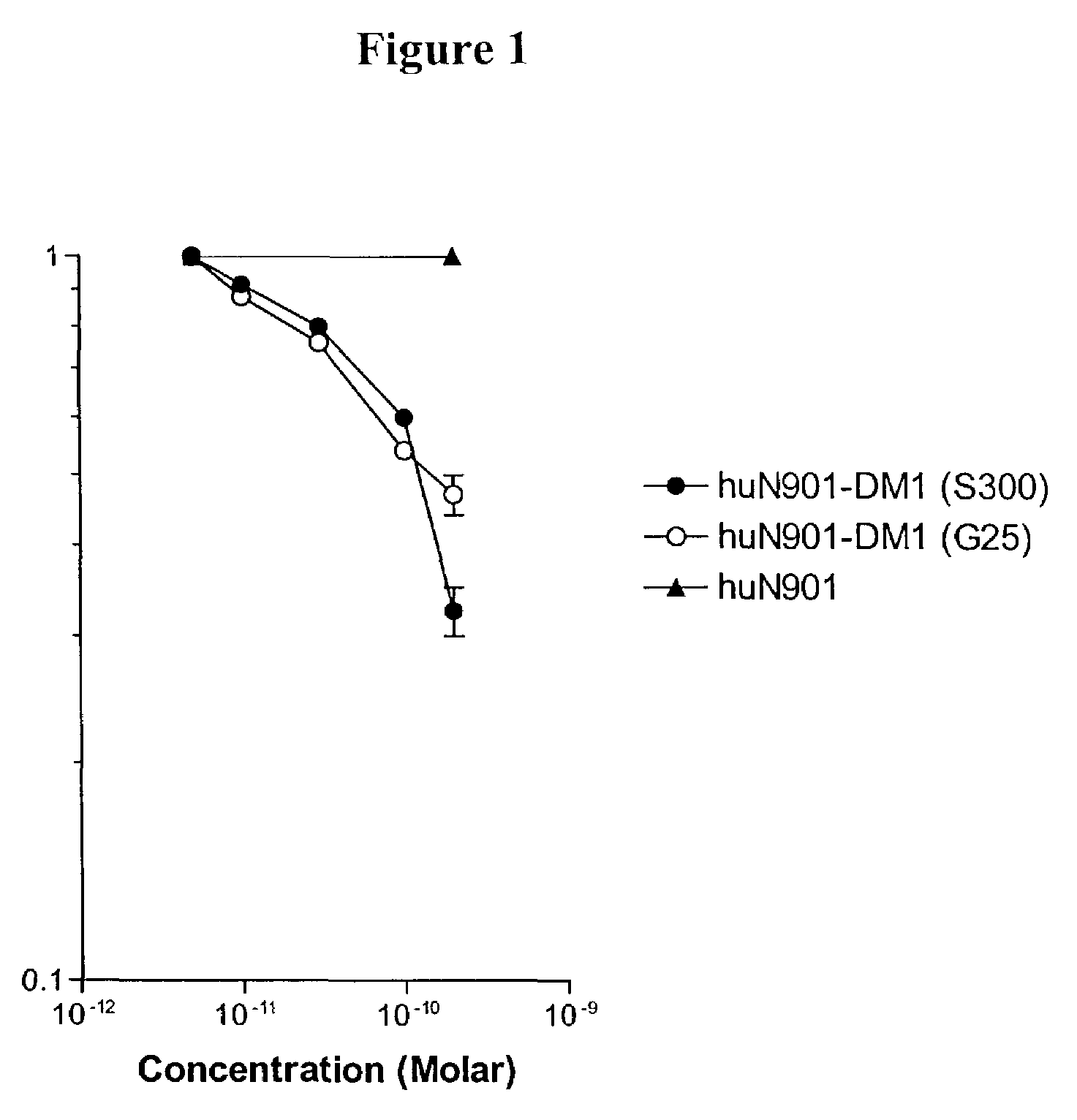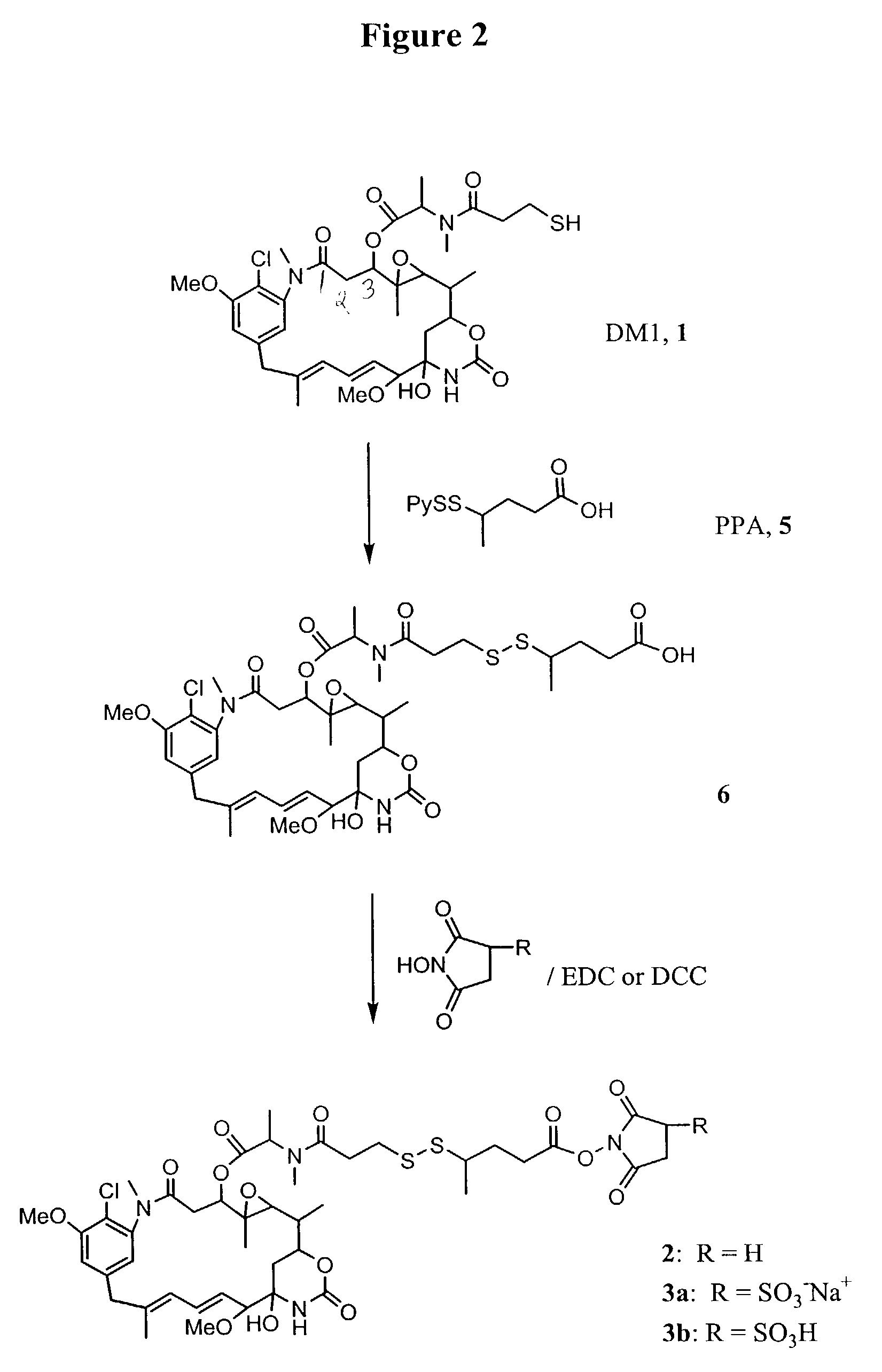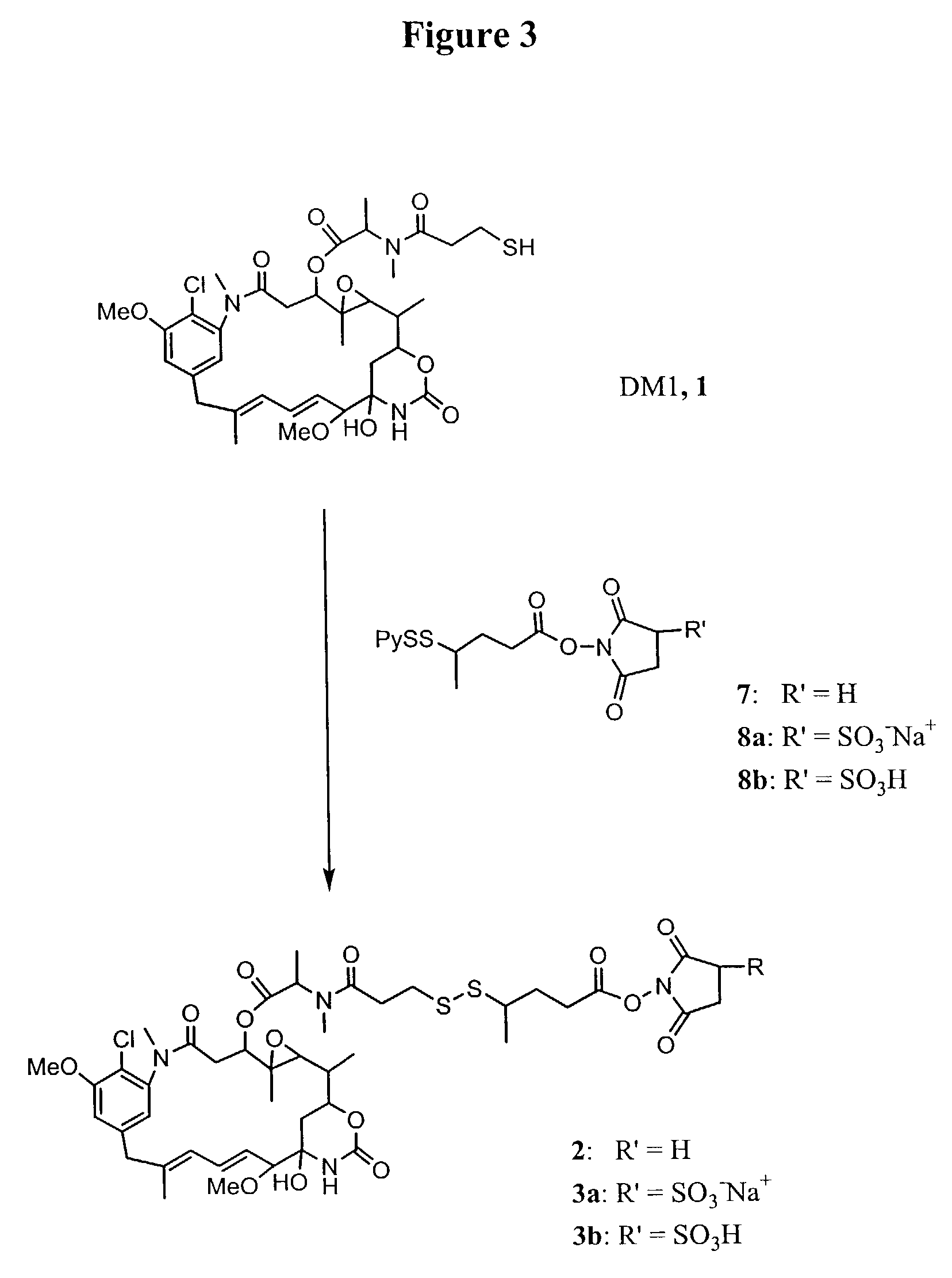Methods for preparation of cytotoxic conjugates of maytansinoids and cell binding agents
a technology of cytotoxic conjugates and maytansinoids, which is applied in the field of preparation of cytotoxic conjugates of maytansinoids and cell binding agents, can solve the problems of difficult chemical modification of existing drugs without reducing their cytotoxic potential, the mechanism by which the drug molecules are released from the antibodies is very inefficient, and the cytotoxic potency of free unconjugated drugs is rarely equal to the cytotoxic potency of free unconjugated drugs, etc. problem
- Summary
- Abstract
- Description
- Claims
- Application Information
AI Technical Summary
Benefits of technology
Problems solved by technology
Method used
Image
Examples
example 1a
Preparation of Cytotoxic Conjugates Using Maytansinoid 2
[0101]A solution of huN901 antibody (2.5 mg / mL) in aqueous buffer (50 mM potassium phosphate, 50 mM sodium chloride, 2 mM ethylenediaminetetraacetic acid disodium salt), pH 6.5, was incubated with a 6-fold molar excess of maytansinoid 2 in dimethylacetamide (DMA) to give a final DMA concentration of 20%. The reaction was allowed to proceed for 13 h at ambient temperature. The reaction mixture was split into two portions. One portion was purified by passage over a Sephadex G25 gel filtration column, and the second portion was purified over a Sephacryl S300 gel filtration column. In each case the fractions containing monomeric conjugate were pooled. The concentration of the conjugate was determined spectrophotometrically using the known extinction coefficients for the antibody and DM1 components at 280 and 252 nM (for huN901: ε280nm=217,560 M−1 cm−1 and ε252nm=80,062 M−1 cm−1; for DM1 ε280nm=5,700 M−1 cm−1and ε252nM=26,790 M−1 cm...
example 1b
Preparation of Cytotoxic Conjugates Using Maytansinoid 3a
[0103]A solution of huN901 antibody (2.5 mg / mL) in aqueous buffer (50 mM potassium phosphate, 50 mM sodium chloride, 2 mM ethylenediaminetetraacetic acid disodium salt), pH 6.5, was incubated with a 12-fold molar excess of maytansinoid 3a in dimethylacetamide (DMA) to give a final DMA concentration of 20%. The reaction was allowed to proceed for 11 h at ambient temperature. The reaction mixture was split into two portions. One portion was purified by passage over a Sephadex G25 gel filtration column, and the second portion was purified over a Sephacryl S300 gel filtration column. In each case the fractions containing monomeric conjugate were pooled. The concentration of the conjugate was determined spectrophotometrically using the known extinction coefficients for the antibody and DM1 components at 280 and 252 nM (for huN901: ε280nm=217,560 M−1 cm−1 and ε252nm=80062 M−1 cm−1, and for DM1 ε280nm=5700 M−1 cm−1and ε252nm=26790 M−...
example 2a
Synthesis of the Maytansinoid Derivative (2) that Bears a Reactive N-succinimidyl Ester
[0105]All reactions were conducted under an argon atmosphere. All reagents were purchased from the Aldrich Chemical Co., New Jersey. Nuclear Magnetic Resonance (1H NMR) spectra were acquired on a Bruker 400 MHz instrument and mass spectra were acquired on a Bruker Daltonics Esquire 3000 instrument using electrospray ionization.
[0106]The syntheses of thiol-containing maytansinoid (L-DM1, 1) has been previously described (U.S. Pat. No. 5,208,020).
[0107]Preparation of 4-(2-pyridyldithio)-pentanoic acid (PPA, 5): A 1 L two-necked flask was equipped with a stir bar, an addition funnel and a thermometer. The flask was charged with 150 g of 1,3-dibromobutane (0.74 mol) and 700 mL of dimethyl sulfoxide. A solution of sodium cyanide (37.5 g, 0.76 mol) in deionized water (79 mL) was added dropwise at a rate which did not allow the reaction temperature to exceed 65° C. After addition was complete the reactio...
PUM
 Login to View More
Login to View More Abstract
Description
Claims
Application Information
 Login to View More
Login to View More - R&D
- Intellectual Property
- Life Sciences
- Materials
- Tech Scout
- Unparalleled Data Quality
- Higher Quality Content
- 60% Fewer Hallucinations
Browse by: Latest US Patents, China's latest patents, Technical Efficacy Thesaurus, Application Domain, Technology Topic, Popular Technical Reports.
© 2025 PatSnap. All rights reserved.Legal|Privacy policy|Modern Slavery Act Transparency Statement|Sitemap|About US| Contact US: help@patsnap.com



